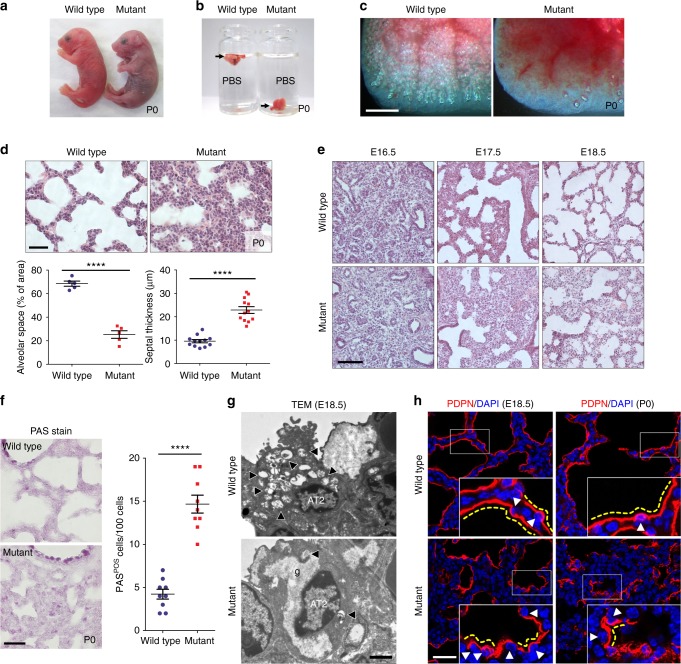Fig. 1.
The ENU-induced mutant exhibits lung development defects. a Gross morphology of wild-type (n = 15) and mutant (n = 12) P0 mice. b Floating assay for wild-type (n = 10) and mutant (n = 8) P0 lungs. c Representative pictures of distal lung from wild-type (n = 10) and mutant (n = 8) P0 mice. d Hematoxylin and eosin (H&E) staining and morphometric analysis of alveolar space and septal thickness in wild-type (n = 15) and mutant (n = 10) P0 lungs. e H&E staining of wild-type (n = 6 for each stage) and mutant (n = 5 for each stage) lungs at E16.5, E17.5, and E18.5. f PAS staining (n = 15 wild types, n = 10 mutants) and phenotype quantification at P0. g Representative TEM images of AT2 cells in wild-type (n = 3) and mutant (n = 3) lungs at E18.5. Arrowheads point to lamellar bodies in AT2 cells; g glycogen. h Immunostaining for PDPN in wild-type (n = 8 per each stage) and mutant (n = 8 per each stage) lungs at E18.5 and P0. Arrowheads point to AT1 nuclei; yellow dotted lines outline AT1 cell morphology. Error bars are means ± s.e.m. ****P < 0.0001, two-tailed Student’s t-test. Scale bars: 500 μm (c), 50 μm (d, e), 30 μm (f, h), 2 μm (g)

